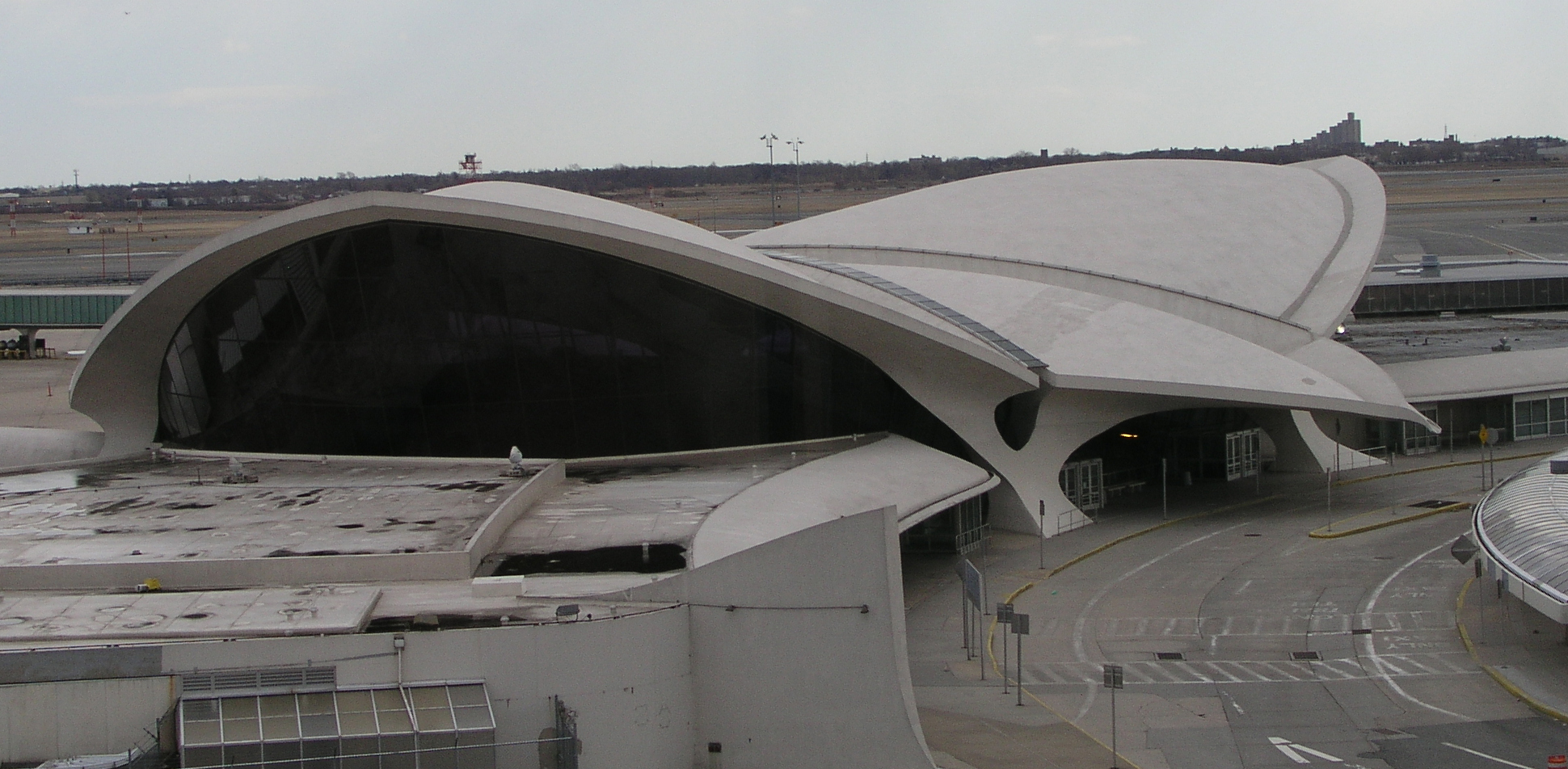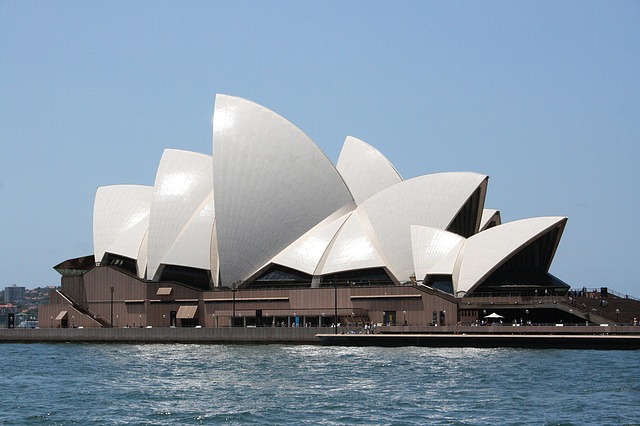Shell roof
Shell roofs are made from structural ‘skins’ where the shell material is thin in section relative to the other dimensions of the roof and undergoes relatively little deformation under load.
They are commonly used where a building interior needs to be free from intermediate walls or columns that might support a more conventional flat or pitched roof, such as; libraries, theatres, leisure centres, airport and railway terminals, and so on.
Shell roofs can be ‘flat’, but are typically curved, assuming a cylindrical, domed, paraboloid or ellipsoid shape. The curvature of shell structures benefits from the same structural efficiency as arches, which are pure compression forms with no tensile stresses. Because of their structural efficiency less material is generally needed compared to more traditional roofs. However, a restraining structure such as an edge beams is required to prevent the shell from ‘spreading’.
Shell roofs may be:
- Single shells such as the dome of the Pantheon in Rome.
- Multi-shell roofs such as Eero Saarinen’s JFK International Airport in New York.
- Reinforced with structural ribs, such as Jørn Utzon’s Sydney Opera House.
- Lattice structures, such as Norman Foster’s Great Court at the British Museum in London.
They are most commonly constructed using insitu reinforced concrete, however, other materials such as and timber and steel may be used for reinforced, lattice or composite structures.
NB the term 'shell and core' refers to a developer's base build that is subsequently fitted out before the building is occupied. For more information see: Shell and core.
[edit] Related articles on Designing Buildings Wiki
- A-frame house.
- Arches.
- Barrel vault.
- Cantilever.
- Conoid shell.
- Domestic roofs.
- Folded plate construction.
- Hyperbolic paraboloid.
- Long span roof.
- Megastructure.
- Pendentive dome.
- Portal frame.
- Purlins.
- Shell and core.
- Sydney Opera House.
- Tensile structures.
- Tension.
- Tension cable and rod connectors.
- The history of fabric structures.
- Types of dome.
- Types of roof.
- Vault.
[edit] External references
- ‘Building Construction Handbook’ (6th ed.), CHUDLEY, R., GREENO, R., Butterworth-Heinemann (2007)
Featured articles and news
Infrastructure that connect the physical and digital domains.
Harnessing robotics and AI in challenging environments
The key to nuclear decommissioning and fusion engineering.
BSRIA announces Lisa Ashworth as new CEO
Tasked with furthering BSRIA’s impressive growth ambitions.
Public buildings get half a million energy efficiency boost
£557 million to switch to cleaner heating and save on energy.
CIOB launches pre-election manifesto
Outlining potential future policies for the next government.
Grenfell Tower Inquiry announcement
Phase 2 hearings come to a close and the final report due in September.
Progress from Parts L, F and O: A whitepaper, one year on.
A replicated study to understand the opinion of practitioners.
ECA announces new president 2024
Electrical engineer and business leader Stuart Smith.
A distinct type of countryside that should be celebrated.
Should Part O be extended to existing buildings?
EAC brands heatwave adaptation a missed opportunity.
Definition of Statutory in workplace and facilities management
Established by IWFM, BESA, CIBSE and BSRIA.
Tackling the transition from traditional heating systems
59% lack the necessary information and confidence to switch.
The general election and the construction industry
As PM, Rishi Sunak announces July 4 date for an election.
Eco apprenticeships continue help grow green workforce
A year after being recognised at the King's coronation.
Permitted development rights for agricultural buildings
The changes coming into effect as of May 21, 2024.























